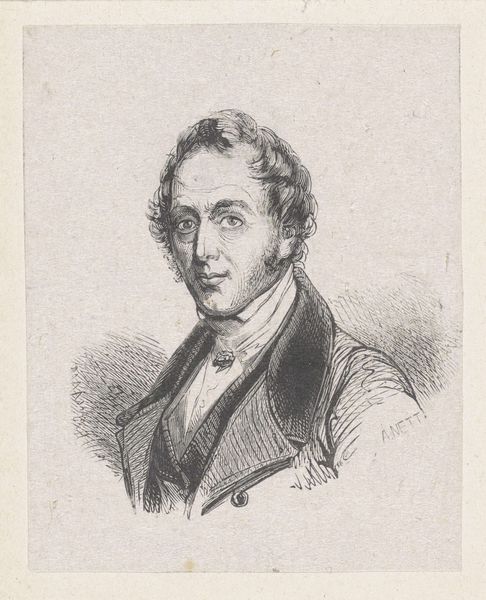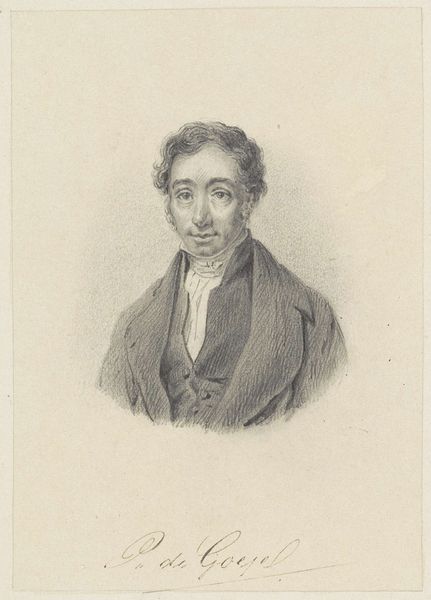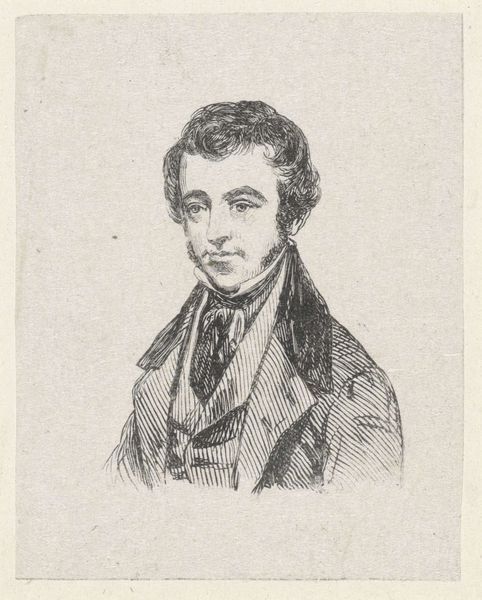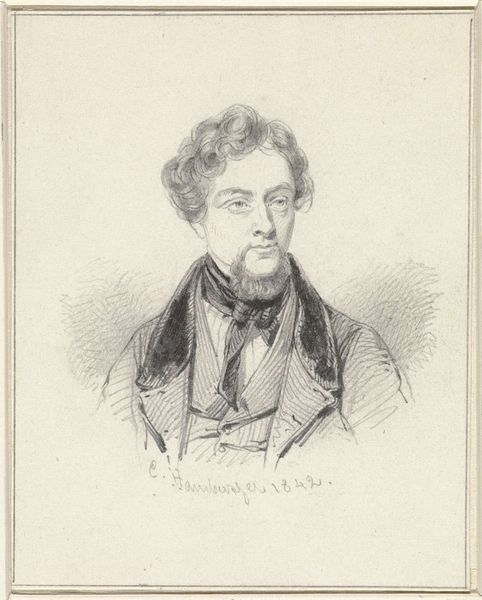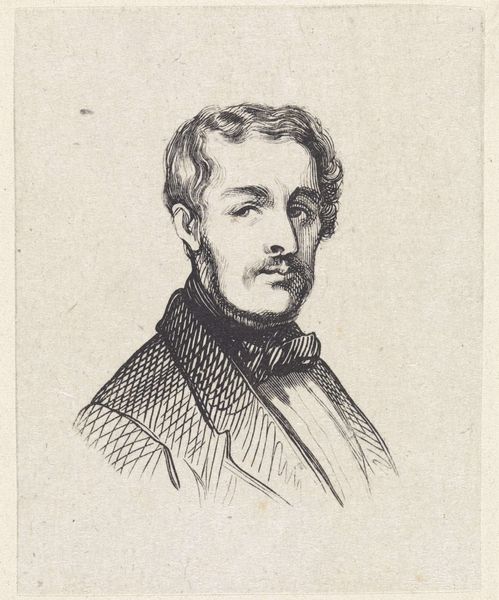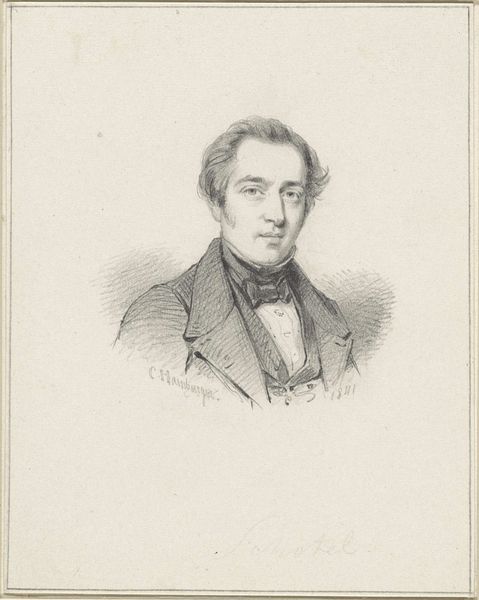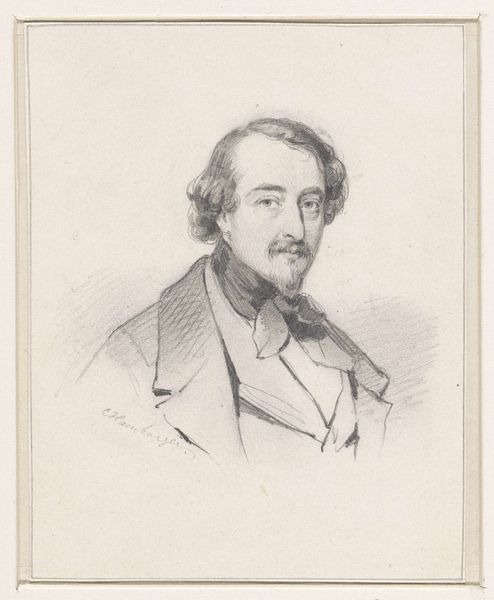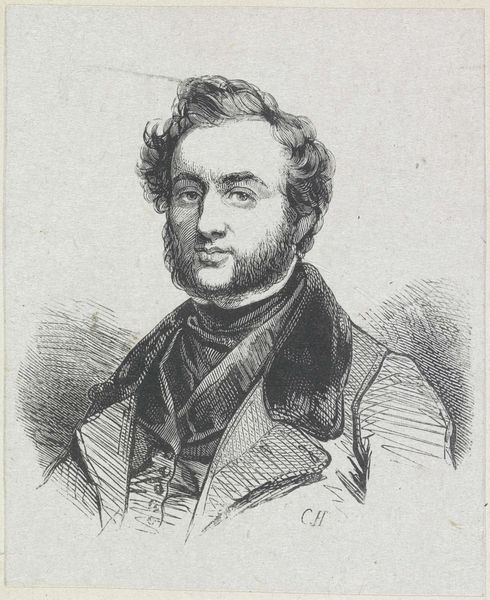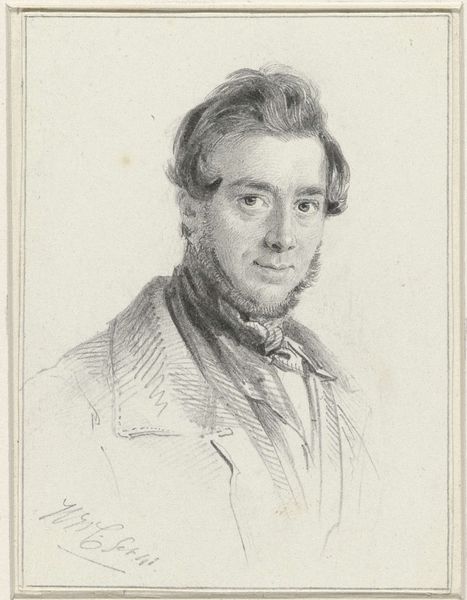
drawing, pencil
#
portrait
#
pencil drawn
#
drawing
#
self-portrait
#
pencil drawing
#
romanticism
#
pencil
#
portrait drawing
#
realism
Dimensions: height 178 mm, width 141 mm
Copyright: Rijks Museum: Open Domain
Curator: Oh, he looks like he's just told a really good joke but is waiting to see if anyone gets it. There's a charming little smirk there. Editor: Indeed. We're looking at "Self-Portrait of Louis Moritz," created sometime between 1783 and 1850. A delicate pencil drawing now residing at the Rijksmuseum. Curator: A pencil drawing can be so vulnerable, can’t it? Like seeing someone without their mask on. Or their wig, depending on the era! You get such a direct sense of the artist’s hand, every tiny mark laid bare. What do you think he's trying to reveal about himself? Editor: Beyond the aesthetics of Realism and Romanticism present here, portraiture inherently engages with questions of selfhood and social representation. Think about who had the luxury of commissioning or creating self-portraits back then—typically those of a certain class and social standing, reinforcing power dynamics. His upward gaze seems to me, perhaps, an active resistance, challenging a dominant social order of that time. Curator: Hmmm, I do love that reading of his gaze as resistance! It does suggest a kind of dreamy detachment from immediate realities. But perhaps there's an element of performativity too? Moritz presenting himself in the way he desires to be seen by the world, and perhaps by himself as well? A striving perhaps? I sense that very strong yearning, that's how I immediately relate with his artwork. Editor: Yes, performativity plays a significant role. Self-portraiture often becomes a stage for constructing and negotiating identity, even if unconsciously so. It raises complex questions: How can one ever truly capture a self, and who is that self for? Perhaps, his is a quest for internal validation? Curator: Ultimately, whether yearning, resistance, or performativity, this self-portrait really pulls you in close. Editor: Absolutely. It invites contemplation on the historical gaze but encourages us to question it anew.
Comments
No comments
Be the first to comment and join the conversation on the ultimate creative platform.
